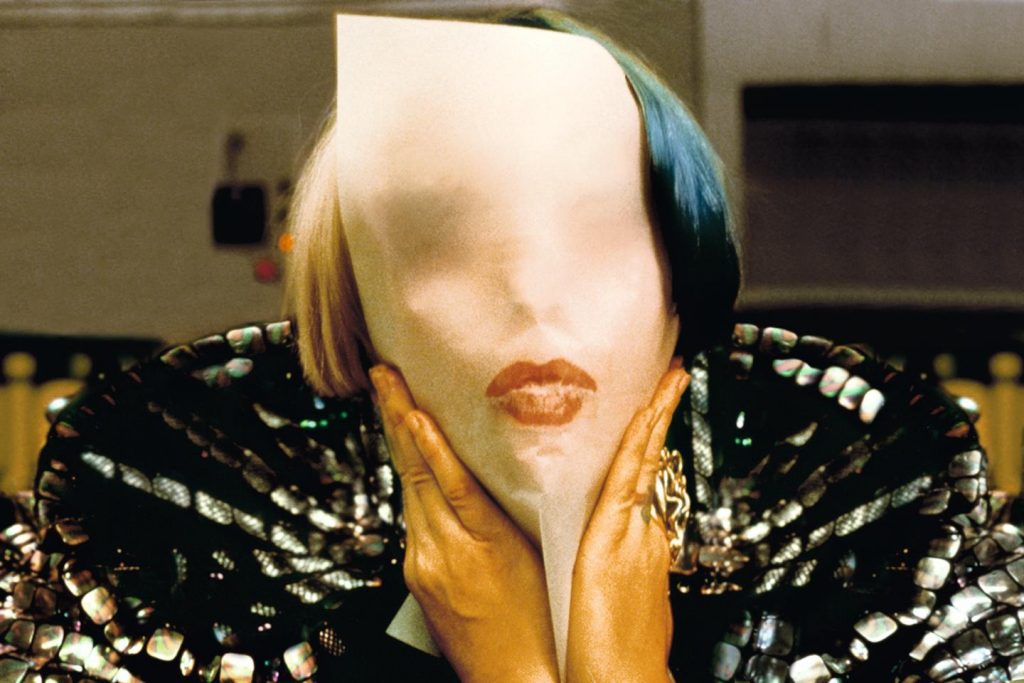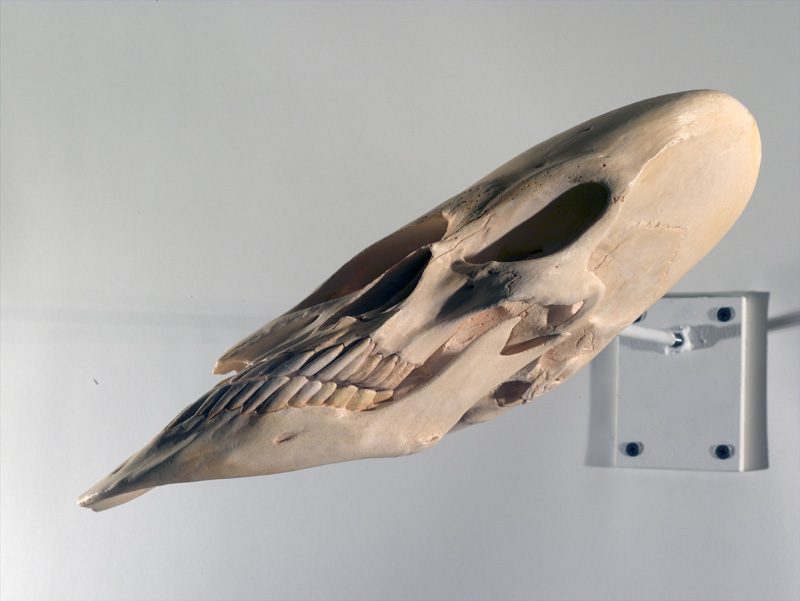Introduction
According to Bryan S. Turner, modernity is considered the beginning of a “somatic society,” a society within which major political and moral problems are both articulated in respect to and expressed through the body.1 Since the late 19th century the body has served as a metaphor for theoretical discussion of social, cultural, and psychological dynamics. Beginning with psychoanalytic theory in the late 19th century and phenomenology in the early 20th century, the body has played an important role in the dynamics between the individual and the world. Post-modern theorists continue to place importance on the body as the location of negotiation between the individual and the external environment but view the boundary between the two as becoming increasingly transparent. According to post-modern theorists, the surface of the body has become both a place of exteriority and interiority, a flat surface on which both the body and the world are produced.2 With the shift from modern to postmodern theory, the changes in the experience of the “self” and of the “other” have been actively discussed, yet there has not been a fully articulated theory of the “abject”. An understanding of the “abject” in regards to the postmodern body is necessary because the “abject” manifests in tandem with the development of a healthy sense of “self” and a well functioning culture. Once a secure sense of “self” is established the “abject” helps maintain the boundary between the ego and nothingness. The “abject” keeps the ego from falling into the abyss of nonexistence. Ultimately, the “abject” and “abjections” are the safeguards of the “self” and of culture.3 Therein lies the first argument of this paper, that the experience of the “self”, the “other” and therefore the “abject” have changed since late modernity and that an understanding of the “abject” is important to understanding the boundaries of the postmodern individual and culture.
The second and perhaps more radical argument to follow is that new media art gives symbolic form to the post-modern “abject”, what Julia Kristeva calls “codifications” of abjection. This is important because without a mediator between the individual and the “abject” the stability of society and the individual is threatened by the ever present, all consuming “abject”. Primitive cultures used purification rituals and defilement taboos to codify abjection while early modern cultures relied on religion to symbolize abjection. According to Kristeva, it is art and literature that take up the role of mediation between the individual and the “abject” in late modernity.4 In post-modern culture, a new art form is necessary to mediate the experience of abjection. The inherent characteristics of new media art position it as an appropriate system to codify the experience of the post-modern “abject”.
Kristeva’s Abject
In his famous essay on the “mirror stage”, Lacan argues that identity is developed through the perception of a bodily self, reflected or framed either through somebody else’s gaze (the mother) or through the frame of a medium (the mirror.) While this identification process is necessary for a strong and healthy ego, it also involves a series of losses that make the coherence of the body image possible. While Lacan focuses his theoretical writings on the identity that arises out of the child’s identification with his or her image, Kristeva concentrates on that which is lost, that which is left out of the totalizing process that transforms momentary and diverse bodily sensations into a unified body image.5 According to Kristeva, that which is rejected by the child, in the process of forming a coherent body image is also the content of the “abject”, the “other”. Through the psyche’s repression, the “abject” is kept at bay, but the domain of the “abject” constantly threatens to overrun the carefully constructed borders of the ego. The negative and positive meanings of abjection are highly ambiguous. On the one hand, abjection is a psychic differentiation that is necessary for the child’s separation from the mother’s body, a highly significant moment in the trials of individuation. In this sense, abjection serves as the safeguard for the ego and the primers of culture. On the other hand, the upsurge of abjection as boundary reveals the deepest collapse of selfhood, the “other”, and the world. The fragility of the border in turn undermines the stability and coherence of the body image.6
In her book Powers of Horror, An Essay on Abjection, Kristeva provides a thorough discussion of what traditionally characterized the “abject”. “Rejecting items such as food, filth, waste, and bodily fluids, the repugnance, the retching, the abreaction that thrusts the body away from defilement, decay and death.”7 All of these examples exist at the border of the condition of the body understood as a self-contained living being. They are based on the modern concept of “self” where the body serves as an envelope containing the ego. In the context of post-modernism, where the body no longer serves as a cohesive boundary separating the “self” from the “object”, the manifestations of the “abject” are different.
Body-In-Pieces
Since the beginning of modernism, the discourse around the body has been increasingly fragmented, or what Wegenstein refers to as: the presentation of a “body-in-pieces”. Wegenstein argues that because of a 1990’s extended concept of digital embodiment, the human psyche has overcome the fragmented body. The body at the turn of the millennium has turned into an organ without a body, or into an organ instead of a body. In this “post-human” condition, every part – interior and exterior – is autonomous, that is, separate from the body in its entirety. Her theory of the body-in-pieces is derived from the post-psychoanalysts Deleuze and Guattari, whose concept of the body-without-organs reconfigured the body as the potentiality underlying all mediation. The border or boundary that is constantly threatened by the “abject”, has moved from the intersubjective space between subject and object to the space that exists between a persons’ sense of “self” and their own skin. “The skin, despite its exteriority, has become an interior, or its exteriority has merged into its interiority.”8

In the post-modern era with a shift towards the body as fragmentation and the skin as interiority the relationship between “self” and “other” is altered, thus forcing a shift in the manifestations of the “abject”. It is not a lack of cleanliness or health that causes abjection but rather what disturbs identity, system, and order. Above all it is a border and the ambiguity of what the border represents. The abject is that which does not respect borders, positions, or rules and threatens the boundary of the ego.9 Refuse and corpses, traditionally thought as images of the “abject” no longer signify the border of the “self”. “Today the scene and the mirror have given way to a screen and a network. There is no longer any transcendence or depth, but only the immanent surface of operations unfolding, the smooth and functional surface…”.10 The border or boundary that is constantly threatened by the “abject”, has moved from the inter-subjective space between subject and object to the space that exists between a persons’ sense of “self” and their own skin. This shift is reflected in the prevalence of new media artists working directly with their skin (Orlan’s performative surgeries, Stelarc’s bioengineered ear, Warwick’s surgically implanted transponder) as metaphoric and literal boundaries between self/other, human/non-human, and body/computer.
Baudrillard’s Postmodern Condition
This is where the locus of the “abject” in the postmodern body can be found. In the space where the “subject becomes weary of fruitless attempts to identify with something on the outside and finds the impossible within; when it finds that the impossible, the ‘other’ constitutes its very being, that it is none other than the abject.”11 According to Baudrillard, it is the immediacy of all things, the breakdown of boundaries, the feeling of no defense, no intimacy, and no interiority that likens an experience of the “abject”. Baudrillard’s writings are crucial to understanding the experience of the postmodern self as the “abject” however, he suggests this state of “abject-hood” is constant. Baudrillard describes the post-modern condition as a new form of schizophrenia.
No more hysteria, or projective paranoia as such, but a state of terror which is characteristic of the schizophrenic, an over-proximity of all things, a foul promiscuity of all things which beleaguer and penetrate him, meeting with no resistance, and no halo, no aura, not even the aura of his own body protects him. In spite of himself the schizophrenic is open to everything and lives in the most extreme confusion. He is the obscene victim of the world’s obscenity. The schizophrenic is not, as generally claimed, characterized by his loss of touch with reality, but by the absolute proximity to and total instantaneousness with things, this overexposure to the transparency of the world. Stripped of a stage and crossed over without the least obstacle, the schizophrenic cannot produce the limits of his very being, he can no longer produce himself as a mirror.He becomes a pure screen, a pure absorption and resorption surface of influent networks..”12
New Media Art as Mediator
Baudrillard’s dystopian view does not take into account the mediating role art plays in codifying the abject, protecting the individual from complete submersion into the “abject”. While the experience of the post-modern “abject” is just as threatening and necessary as the experience of abjection in previous cultures, it is temporary and is codified through art forms that provide a ritualized, symbolic experience of the breakdown of boundaries so the individual does not actually experience abjection as abjection. “In Powers of Horror religions take on the task of transposing the semiotic (abject) into the imaginary and, in doing so, provide a social symbolic elaboration of the unstable border of self and society. Religion protects the subject and society by shifting the border into the realm of things. This act is fundamental to collective existence.”13 When Kristeva considers the religious coding of abjection, she is fundamentally concerned with how they respond to the alterations in subjectivity that turn up at these limits of selfhood and society. Her focus is therefore on their response to the entanglement of fear and non-differentiation. In her view, the historical religions have provided symbolizations that aid the subject in warding off what pertains to the passive mood, “where the subject, fluctuating between inside and outside, pleasure and pain,
word and deed, would find death”.14 At the end of modernity, Kristeva states that Western monotheism is unable to provide this codification of the abject for a secular society. Kristeva theorizes that literature and art take up where religion left off. In her book The Sense and Non-Sense of Revolt she speaks specifically of installation art.
In an installation, the entire body is called on to participate through its senses – sight, of course, but also hearing, touch, sometimes smell. As if instead of creating an object, these artists seek to situate us in a space at the borders of the sacred and ask us not to contemplate images but to commune with beings…15
New Media Art is characterized by an immersive experience, situating the viewer in a space where the borders of the “self”, “object” and therefore the “abject” are without boundaries. Wegenstein calls the shift in the era of new media a shift towards the corporealization of the image. Rather than a disembodiment of information and images, the age of new media constitutes the current moment in a process of embodiment or corporealization.16 These characteristics make new media art an appropriate system through which the experiences of the “abject” can be codified.
Mark Hansen, author of New Philosophy for New Media, argues that one of the fundamental characteristics of new media that distinguishes it as “new” is the loss of materiality and specificity brought on by digital technologies. This lack of materiality and specificity results in an increased reliance on the physical body of the viewer to process, interpret, and provide meaning to digital information.17 “In cyberspace, objects are no longer distinct from their environment; they merge and push into the environment or context, becoming part of one world. In other words, what holds the body parts together is no longer the entirety of the physical body, but the frame through which one experiences it.”18 The body, in new media art, not only serves as media expression through appearance to the outer world, but also adopts the characteristics of media. The skin and the other organs of the body take on the role of pure mediation of a flat screen, of the surface on which the body as such is produced.19 The boundary between the body and the digital media is blurred, reflecting the collapse of the boundary between the “self’ and the “object” in the experience of the post-modern “abject”. But because this experience is contained and codified within a work of art, the viewer can touch on the experience of “abjection” without succumbing to it. For Kristeva, the experience of the abject is a descent into semiotic processes and this is the dimension to which art can give symbolic form. This is why Kristeva calls the “subject” of abjection, whose symptom is
the rejection and reconstruction of languages, eminently productive of culture.20 In his discussion of Jeffrey Shaw’s digital environment, Mark Hansen describes the artist’s trajectory as a movement from the technical frame (the image) to the use of “the embodied (human) creative capacity to enframe digital information.”21 This is crucial for the argument of this paper as it moves the role of the frame from the external image into the internal space of the human body, reflecting the shift of subject/object relations in post-modernism.

New media art serves as a catalyst for the virtualization of the body through the body’s ongoing interaction with a constantly evolving environment. Hansen distinguishes between the digital and the virtual saying it is the human capacity for simulation that is responsible for its virtual dimension. Whereas digital images present a field of information available to the body for meaningful interpretation, in virtual reality (VR) the image is literally created in the process of perception or one could say, the image simply is mental simulation. The most crucial aspect of VR, according to Hansen, is the coupling of perception and affection that it brings about. The Telepresent Onlookers (1995), a project designed specifically to be experienced with Jeffrey Shaw’s Extended Virtual Environment (EVE) platform, was created to furnish a “direct experience” of the coincidence or dedifferentiation of perception and simulation. This project involved live image capture and the dynamic coupling of the image environment with the viewer’s movement within the space of the image. The spectator simultaneously controlled the camera-robot and the projector-robot through the actions of their body, both recording and perceptually reconstructing the scene. This spectatorial synthesis gave rise to a “new temporal dimension” in which the virtual space of perception was collapsed in an experience of telepresence.22
Toni Dove, a new media artist working with sensor devices to create responsive interfaces, strives to produce the experience of doubling or extending the body in narrative space. She creates digital characters that can be inhabited like puppets in an attempt to produce an “uncanny” experience. In the responsive interface, the body is active and the experience becomes embodied. A viewer is simultaneously aware of their body “in“ their body and “in” the screen. The space between the two is activated. It is the space through which the body extends itself into the movie of virtual space. It is the invisible experience of the body’s agency beyond its apparent physical edge.23
Baudrillard refers to this experience of remote sovereignty as “’hyperrealism of simulation’: …The era of hyper-reality now begins. What I mean is this: what was projected psychologically and mentally what used to be lived out on earth as metaphor, as mental or metaphorical scene, is henceforth projected into reality, without any metaphor at all, into an absolute space which is also that of simulation.”24 For Elizabeth A. Grosz, the virtual is not a separate entity from the real: rather, the outside is a virtual condition of the inside.25 What emerges from the phenomenological and the psychoanalytical accounts of cyberspace is that this is not a non-space, but on the contrary an actualization of a potentiality of life, and in that sense it has the quality of the virtual, as that which is becoming.26
The unconscious can be said to “resemble” the digital in some ways, which is why, for example, the world wide web is often coupled with metaphors as a “split self”. Splitting the self is the realization that there was not any self in the very beginning, threatening a complete dissolution of self to the “abject”. “How can I be without border? That elsewhere I imagine beyond the present, or that I hallucinate so that I might in a present time speak to you, conceive of you it is now here jetted, abjected into “my” world. I behold the breaking down of a world that has erased its borders: fainting away.”27
Baudrillard argues that with the collapse of the interior with the exterior, the desire of the self, alienated from the other, has been replaced with an “ecstasy of communication” that is obscene. “It is no longer the obscenity of the hidden, the repressed, the obscure, but that of the visible, the all-too-visible, the more-visible-thanvisible; it is the obscenity of that which no longer contains a secret and is entirely soluble in information and communication.”28 Mark Hansen offers an example of the obscenity and abreaction that results from the over-proximity of all things. In Robert Lazzarini’s skulls (2000), exhibited at the Whitney museum’s “Bitstreams” show, CAD (computer aided design) is used to recreate four versions of an actual human skull that is subjected to various distortions. The resulting distorted files became the models for four sculptures cast in solid bone. The effect is one of perspectival crisis, confronting the viewer with disorienting ambiguities of digital space that is not filtered to match perceptual expectations and capacities. As Baudrillard suggests, the interconnection of all information and communication networks creates a schizophrenic experience where the body, “is open to everything and lives in the most extreme confusion. His is the obscene victim of the world’s obscenity. The schizophrenic is not, as generally claimed, characterized by his loss of touch with reality, but by the absolute proximity to and total instantaneousness with things, this overexposure to the transparency of the world. Stripped of a stage and crossed over without the least obstacle, the schizophrenic cannot produce the limits of his very being, he can no longer produce himself as a mirror.”29

In Lacan’s Four Fundamental Concepts, he uses the word “screen” to refer to a mediating grid or “image” that intervenes between the gaze and the subject-as-spectacle, the relation between the gaze and the subject-as-look; and, finally the relation between the object and the subject-as-look. The screen, in other words, gives shape and significance to how one is seen by “others as such,” how a person defines and interacts with the agency to whom they attribute their visibility and how they perceive the world.30 The physical nausea provoked by the installation skulls can be
understood as the collapse of the body’s ability to find itself in relation to the exterior environment that refuses to reflect back to the body a coherent image of itself. It is a collapse of the boundary separating the interior and the exterior, the self and the other, the “abject” from the ego. “There is nothing like the abjection of self to show that all abjection is in fact recognition of the want on which any being, meaning, language or desire is founded.”31
Lazzarini’s work is perhaps the most poignant example of how new media art codifies the experience of the “abject” for the post-modern “subject”. It clearly articulates the somatic experience of the collapse of the boundary into digital, ungrounded space. This symbolic experience protects the individual and culture from complete submersion into abjection. Baudrillard’s theories provide a clear understanding of abjection in postmodern era as long as one keeps in mind the experiences he so brilliantly articulates are temporary. The logic of new media art and the digitalization of the image serve as filters of this experience for the individual and for culture. In postmodern cultures, abjection assumes a status that is no longer assuaged by religion or taboo rituals. In a world in which the “other” has collapsed, the aesthetic task amounts to retracing the fragile limits of the speaking being and through that experience “subject” and “object” push each other away, confront each other, collapse and start again.32 New media art is capable of managing this terrain.
References
[1] Bryan S. Turner, The Body and Society: Explorations in Social Theory, second ed. (London: Sage Publications, 1996), 7-8.[2] Bernadette Wegenstein, Getting Under the Skin The Body and Media Theory (Massachusetts:The MIT Press, 2006), 32.
[3] Julia Kristeva, Powers of Horror, An Essay on Abjection, trans. Leon S. Roudiez (New York: Columbia University Press, 1982), 2.
[4] Ibid., 17.
[5] Gail Weiss, “The Abject Borders of the Body Image” in Perspectives on Embodiment, The Intersections of Nature and Culture, ed. Gal Weiss and Honi Fern Haber (New York: Routledge), 41-59.
[6] Sara Beardsworth, Julia Kristeva Psychoanalysis and Modernity (New York: State University of New York Press, 2004), 82.
[7] Kristeva, Powers of Horror, 13.
[8] Wegenstein, Getting Under the Skin The Body and Media Theory, 107. Wegenstein clarifies that bodily fragmentation in the cultural imagination is not new but ever since the era of post-modernity it has been newly emphasized and has become emblematic of the order of new media.
[9] Kristeva, Powers of Horror, 3-9.
[10] Jean Baudrillard, The Ecstasy of Communication, trans. Bernard and Caroline Schutze, ed. Sylvere Lotringer (New York: Semiotext(e), 1988), 12.
[11] Kristeva, Powers of Horror, 5.
[12] Jean Baudrillard, The Ecstasy of Communication, 27.
[13] Sara Beardsworth, Julia Kristeva Psychoanalysis and Modernity (New York: State University of New York Press, 2004), 120.
[14] Kristeva, Powers of Horror, 63.
[15] Kristeva, The Sense and Non-Sense of Revolt, (New York: Columbia University Press, 2000), 10.
[16] Wegenstein, Getting Under the Skin The Body and Media Theory, 147.
[17] Mark Hansen, New Philosophy for New Media (Massachusetts: The MIT Press, 2004), 22.
[18] Wegenstein, Getting Under the Skin The Body and Media Theory, 40.
[19] Ibid., 118.
[20] Beardsworth, Julia Kristeva Psychoanalysis and Modernity, 90.
[21] Mark Hansen, New Philosophy for New Media, 85.
[22] Mark Hansen, New Philosophy for New Media, 146-196.
[23] Tony Dove, “The Space Between: Telepresence, Re-animation and the Re-casting of the Invisible” in New Screen Media, Cinema/Art/Narrative, ed. Martin Rieser and Andrea Zapp, (London: BFI Publishing, 2002), 209.
[24] Jean Baudrillard, The Ecstasy of Communication, 133.
[25] Elizabeth A. Grosz, Architecture from the Outside. Essays on Virtual and Real Space. (Massachusetts:The MIT Press, 2001), 72.
[26] Bernadette Wegenstein, Getting Under the Skin The Body and Media Theory, 152.
[27] Julia Kristeva, Powers of Horror, An Essay on Abjection, 13.
[28] Jean Baudrillard, The Ecstasy of Communication, 22.
[29] Jean Baudrillard, The Ecstasy of Communication, pg. 27.
[30] Kaja Silverman, The Threshold of the Visible World (Routledge: New York), 174.
[31] Ibid., 5.
[32] Kristeva, The Powers of Horror, 18.


